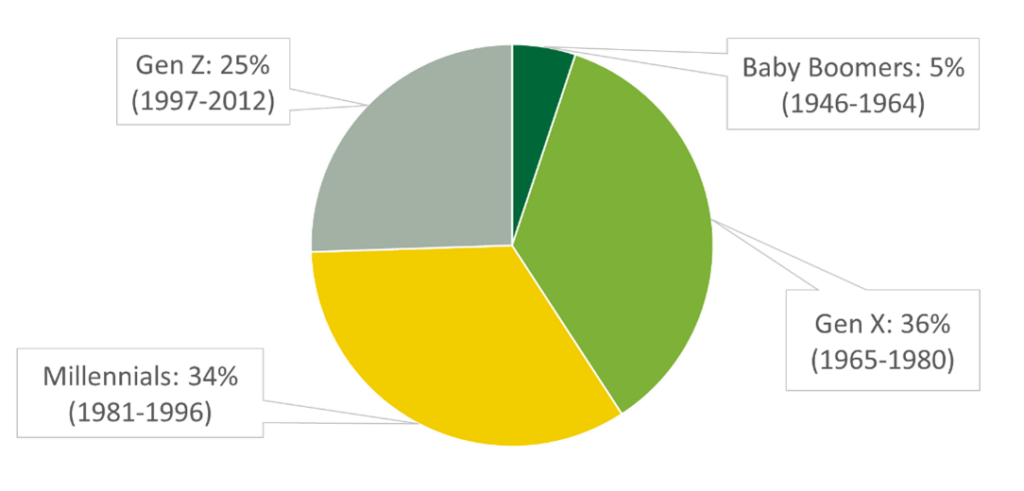Recently, I had the opportunity to present on several facets of differential leadership at Global AgInvesting – Asia, where the topic of diverse, multigenerational teams was of particular interest.
Something we regularly hear from our clients is how they serve a more diverse consumer base than ever, but what isn’t always obvious is how our internal teams should parallel that diversity for the best business outcomes.
During my executive career and in my time with Kincannon & Reed, what I’ve seen makes the difference in performance and results is leadership.
No one singular leader successfully guides a business through all points of an organization’s growth cycle. However, what if you take a leader and make them part of a capable, adaptable team that builds upon their weaknesses? That’s when navigating the inevitable peaks and valleys of the growth cycle becomes possible.
Not only are the most diverse companies outperforming their less diverse peers in terms of innovation revenue, but they also outpace competition in overall profitability. And while those organizations may perform better, it’s not because building and leading diverse teams is easier. These teams and their leaders are prepared to question, challenge each other, they push back, and they demand transparency and accountability.
BUILDING DIVERSE TEAMS
The most successful teams are made up of diverse individuals who complement one another’s talents and bring new ways of thinking to the table.
Organizations accomplish this in two ways: bringing outside talent in and growing internal talent. In either case, the goal is the same. Research from Harvard Business Review1 and Deloitte2 reinforces our own findings regarding the key attributes of emotionally intelligent, high performing inclusive leaders:
LEADING DIVERSE TEAMS
The successful leader understands that management preferences, communication styles, and career motivations differ from individual to individual. In order to engage fully, different approaches must be taken.
For example, an increasingly important diversity factor that poses a unique set of challenges from a leadership perspective is that of the multi-generational workforce.

The majority of Boomers would prefer a face-to-face meeting and value company loyalty, while Millennials tend to prefer email communications and seek opportunities for growth. Gen X places higher emphasis on work-life balance than previous generations and they’ll communicate however it’s most efficient, while Gen Z relies on IMs and texting to communicate and prefers to be independent and self-directed.3
With just this one diversity factor we begin to see how adaptable and emotionally intelligent leaders must be to keep their teams connected and engaged. In fact, results from our own survey of food and ag execs indicated emotional intelligence and empathy are some of the most sought-after qualities in leaders today and it’s not hard to see why.
I would argue the investment in people is actually more important than investing in other assets because it’s people who determine the success of the organization. So, as you build your team, consider what kind of kind of environment you are creating and whether it’s attractive to a diverse workforce. Is it one of support and collaboration, of transparency and accountability? Are there opportunities for development and growth? Does leadership embody the values of the organization? All of these factors matter in attracting high performing leaders, no matter how diverse the candidate.
SOURCES